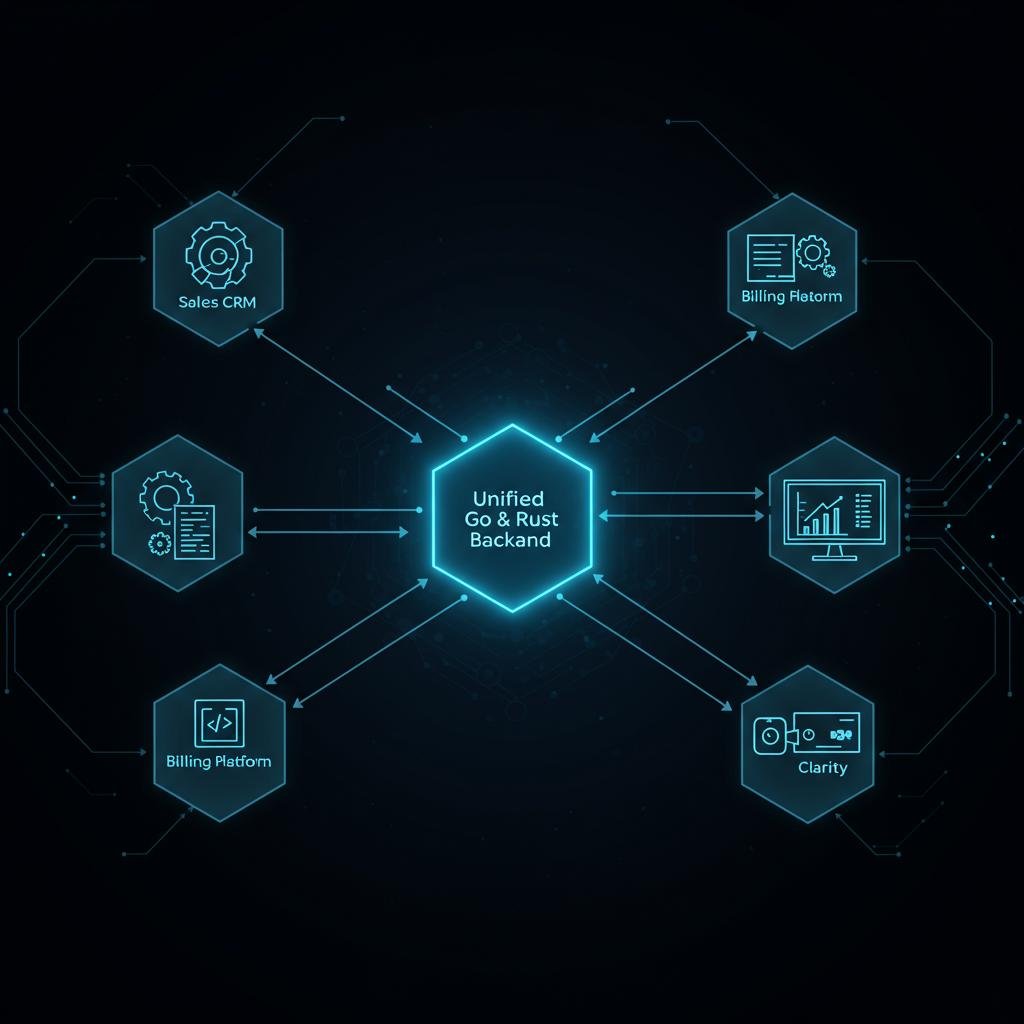Why Your 'Simple' Tech Stack Feels Like Rocket Science
July 5, 2025

Your business started with a few simple tools, but now feels tangled in a web of complexity. This article dissects how ‘simple’ tech stacks lead to data chaos and manual work, limiting your ability to scale. We’ll introduce a foundation-first approach to building robust, unified systems that eliminate technical debt and drive real growth.
The Duct Tape and Glue Holding Your Business Together
It starts innocently enough. A spreadsheet for tracking leads, a Stripe account for payments, a Mailchimp list for newsletters. Each tool is simple on its own. But as your business grows, so does the ’tech stack’ you’ve accidentally assembled. Soon, you’re spending hours manually exporting CSVs, wrestling with Zapier integrations that break, and realizing your customer data is scattered across five different platforms.
This is the silent scaling killer: a fragmented system that drains productivity and obscures the truth of your business performance. What felt like a series of smart, simple choices has become a complex beast that stifles growth. This isn’t just a technical problem; it’s a business problem. This article explores how to escape this complexity trap and build a truly robust foundation for your future.
Symptom 1: The ‘Death by a Thousand Clicks’ Reality of Manual Work
Problem: Your team is stuck in a cycle of copy-pasting data between applications, manually onboarding new customers, or collating reports from different sources.
Pain Point: This isn’t just inefficient; it’s a massive drain on morale and a direct bottleneck to growth. Every hour spent on manual tasks is an hour not spent on high-value activities.
Root Cause: Your systems are not designed to communicate. They are islands of data with no bridges between them, forcing your team to become the slow, error-prone integration layer.
Azlo.pro Angle: We solve this by building custom automation backends that act as the central nervous system for your operations, eliminating repetitive tasks and freeing your team to focus on what matters.
Symptom 2: Data Chaos and the Inability to Make Confident Decisions
Problem: You can’t get a single, clear answer to a simple question like, ‘What is our true customer lifetime value?’ because sales data is in one system, support tickets in another, and billing in a third.
Pain Point: This data chaos leads to flawed strategies, missed opportunities, and a constant feeling of uncertainty. You’re flying blind when you should have a clear dashboard.

Root Cause: Off-the-shelf tools are designed for their specific function, not for unifying your entire business’s data. Integrating them after the fact is a messy, unsustainable compromise.
Azlo.pro Angle: We specialize in data unification, creating a single source of truth. By building a custom, high-performance data pipeline and backend, we give you the clarity needed to make data-driven decisions with confidence.
Symptom 3: Your ‘MVP’ Can’t Scale Beyond a Handful of Users
Problem: The collection of no-code tools and quick scripts you launched with is now hitting its limits. The system is slow, unreliable, and adding any new feature feels like a monumental task.
Pain Point: You’re trapped. You can’t grow without better technology, but rebuilding feels daunting. This is the definition of technical debt—the quick fixes of yesterday are costing you your future.
Root Cause: Many MVPs are built for validation, not production. They aren’t engineered with a robust architecture designed for performance and scalability.
Azlo.pro Angle: We deliver production-ready MVPs. By leveraging powerful, efficient technologies like Go and Rust from the outset, we build a solid foundation that scales with you, preventing the need for a costly and painful rewrite down the line.
The Cure: A Foundation-First Approach to Technology
Solution: Instead of piecing together disparate systems, invest in a central, custom-built backend that manages your core business logic and data.

Benefit 1 (Unification): All your tools (CRM, billing, marketing) plug into this central hub, which normalizes and stores data cleanly. Your data is finally unified and reliable.
Benefit 2 (Scalability): This core is built with performance in mind using technologies like Go or Rust, ensuring it can handle growth from 100 to 1,000,000 users without breaking a sweat.
Benefit 3 (Flexibility): Adding a new feature or swapping out a third-party tool becomes simple. You only change the connection to the hub, not your entire workflow. This is true agility.
Strategic Shift: This isn’t just about code; it’s a strategic decision to own your core operational infrastructure instead of renting it from a dozen different vendors.
The feeling that your tech stack is working against you is a clear sign that you’ve outgrown the ‘simple’ solutions that got you started. The constant manual work, fragmented data, and scaling walls aren’t just minor inconveniences; they are direct threats to your business’s potential.
By shifting from a reactive, tool-by-tool approach to a proactive, foundation-first strategy, you can escape the complexity trap. Building a robust, unified backend isn’t an expense; it’s an investment in efficiency, clarity, and future growth. Stop letting technology be the bottleneck. It’s time to build a system that truly supports your ambition.
If you’re ready to build a truly robust system, contact Azlo.pro to discuss your project.